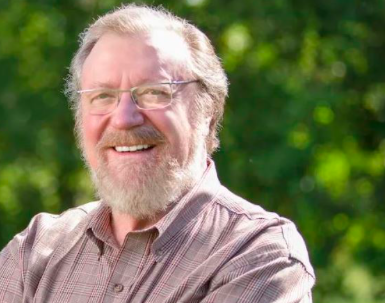By DAN FAGAN
If Legislators followed the law and paid the 2021 Permanent Fund dividend based on the statutory formula that is on the books, each available Alaskan would likely get $3,687 this fall. That’s based on the money in the Earnings Reserve Account on June 21.
Traditionally, the check amount is calculated at the end of the fiscal year on June 30, so the $3,687 figure is not that far off from what this year’s statutory formula will end up being.
This is all moot, since former Gov. Bill Walker changed things by ignoring the statutory formula used for decades and instead allowed legislators to determine how the money in the earnings reserve account is spent.
And since Republicans-in-name-only and Democrats outnumber conservatives in the Legislature, when it comes to how to spend money from the Permanent Fund Earnings Reserve Account, the people are thrown left over scraps.
Mike Dunleavy, elected to undo Walker’s ignoring of the law and resulting PFD thievery, has been unable to fulfill his campaign promises.
If Dunleavy was able to make good on his campaign promise to go back to following the law and paying the full statutorily required dividend and repay the money removed since the change, a family of four would be looking at a check for $43,200 this year.
Do you think Alaskans would have ever voted for Walker if they knew it would cost a family of four that much cash?
The legislature passed a budget with a $525 dividend this year. If it holds and the governor ends up signing it, each eligible Alaskan will lose out on $3,100 this year that’s legally theirs.
Since state leaders started ignoring the PFD statutory formula still on the books, Alaskans are now out a combined $10,800, including the $3,100 this year, assuming the current budget stands.
Some argue Alaskans don’t deserve that kind of money because they haven’t earned it. Sen. Natasha Von Imhof even called Alaskans who asked legislators to follow the traditional statutory formula law greedy.
Those opposed to paying the full dividend say our state is embroiled in a fiscal crisis and we can’t afford to hand out money to Alaskans.
And yet oddly enough, the most conservative members of the Legislature are the ones who support the full dividend the most. Almost all Democrat and RINO legislators oppose paying the full dividend.
But aren’t conservatives supposed to be against government handouts and free unearned money?
The money from the Alaska Permanent Fund originally came from the oil industry. It’s now so huge and capable of growth it has become quite the money maker. It grew from $65 billion last June to $81 billion this year. The fund grew so quickly over that time, it earned enough money to pay the full statutorily required dividend for this year in less than two months.
So why are conservative legislators supporting the full dividend, while the RINOs and most Democrats opposing it? Two words: special interests.
RINOs and Democrats are government-centric types. They’re in it for the public employee union bosses, the non-profit cabal, lobbyists, Alaska businesses benefitting financially from government bloat, deep state bureaucrats, and the Juneau swamp. They know if the money produced by the Permanent Fund goes to regular working people, it means less for the special interests.
If you were to summarize in a sentence the legacy of Bill Walker it would be this: He changed the focus of the Permanent Fund away from a mechanism designed to share Alaska’s resource wealth with the people to one now catering to special interests.
And yet nothing’s really changed under Dunleavy. He’s not a dictator; the Legislature is the culprit in denying Alaskans their legally required full dividend.
But Dunleavy has not used his bully pulpit in calling out anti-dividend legislators. His effort to keep his PFD promises during the campaign has been lackluster at best.
Recently, the governor gave up on the traditional statutory formula by announcing a new plan. It’s a plan similar to the one proposed by Dunleavy’s opponent, Mark Begich.
The traditional statutory formula suffered its final death blow when the Senate voted it down recently. Senators Peter Micciche and Josh Revak, both of whom campaigned on favoring the full dividend, were the deciding votes to kill it.
The traditional statutory formula was working and did not add a penny to the state’s budget. Taking a five-year average of the earnings account to pay a dividend guaranteed the corpus of the fund would always grow. If the earnings reserve account had a good five years, Alaskans got a big dividend. If the earnings were off, the dividend would shrink.
The plan was working until Walker tried to fix something that wasn’t broken. The special interests and government-centric types couldn’t be happier.
Some opposing the full dividend also argue as the Permanent Fund grew so would the dividend. They claim the check would become so large it might attract freeloaders to the state. The $3,600 that would have been paid this year is a good example.
If the fund continues to grow as it has in the past year, it won’t be long until we would have seen a $10,000 dividend for each eligible Alaskan under the traditional statutory formula.
And that is a legitimate concern, although to qualify for that big check you’d have to live in the state a full year. Alaska is an expensive place to live, and the winters are long and cold. For a single person to uproot themselves and live somewhere more expensive for a year in hopes of getting a dividend check seems unlikely.
For a large family it might make more sense. A family of five would get $50,000 once the $10,000 dividend check became a reality.
This is something state leaders could deal with in the future if it becomes a problem by capping the dividend.
Bottom line is the PFD statutory formula the state has been using for decades was working. It’s true the state spends more than it takes in, but that’s because we spend close to triple the national average of other states.
Under the traditional formula the state could still use half of the five-year average of the earnings of the fund to help pay for government. It had not done so in the past, but it could have.
The governor’s PFD proposal is better than what Walker has given us. But it’s a shame Dunleavy gave so little effort to fight to keep the PFD formula we’ve been using all along. Now that Dunleavy gave up on it, it’s dead for good.
Dan Fagan hosts the number one rated morning drive radio show on Newsradio 650 KENI.








